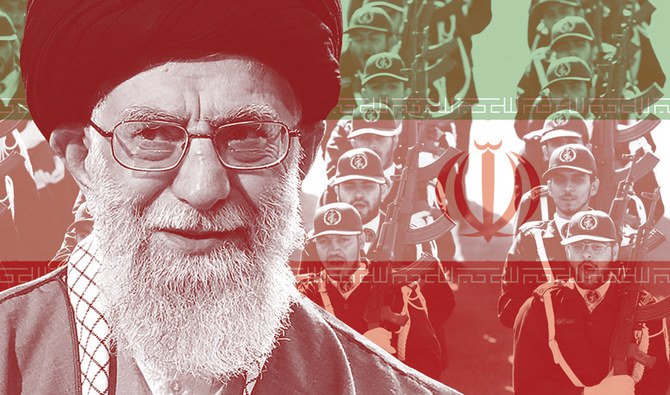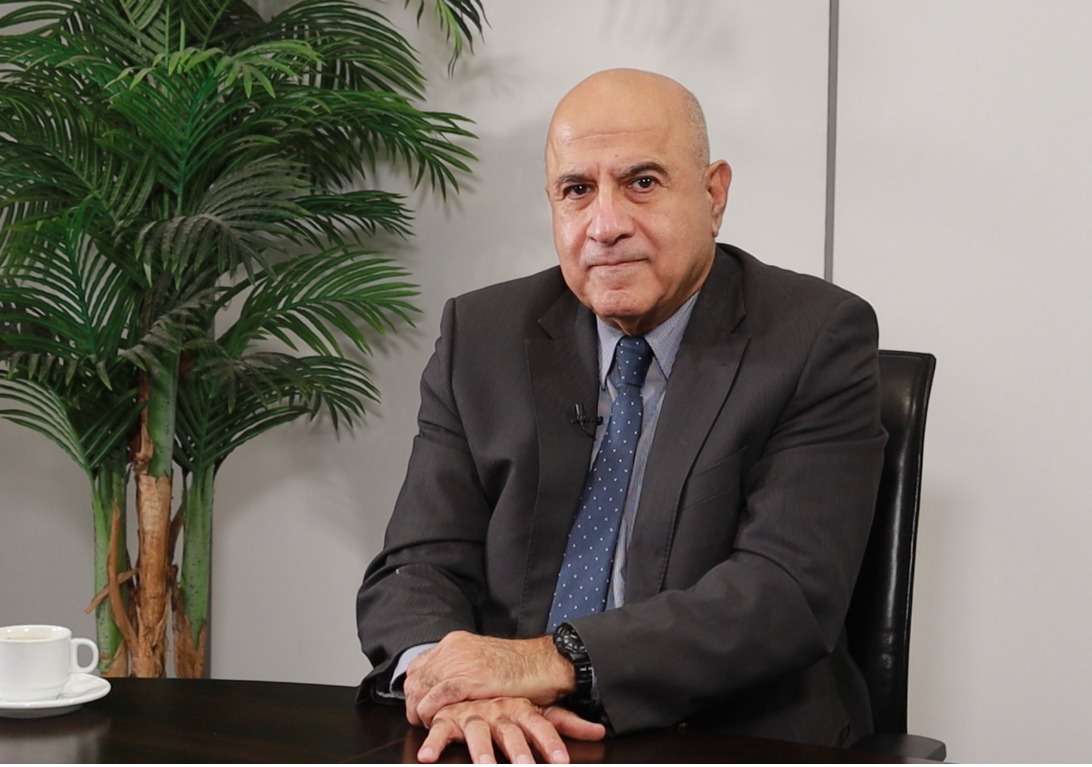Arrests in Germany highlight reach of Islamic State’s Central Asian network/Thomas Joscelyn/FDD/April 21/2020
اعقعال ارهابيين تابعين للنظام الإيراني في ألماني يكشف شبكته في وسط أسيا
Iran’s new frontline with America in the Gulf and Syria/Seth Frantman/Jerusalem Post/April 21/2020
ايران تفتح جبهوة جديدة مع أميركا في دول الخليخ وسوريا
Iran wants to remove the US from Iraq and Syria while also carrying out pinprick threats in the Gulf.
Iran is threatening the US in the Persian Gulf through new harassment of US naval vessels and messages demanding the US leave the region. It is part of Tehran’s Middle East game plan to try to remove the US from Iraq and Syria while also carrying out pinprick threats in the Gulf. Iran has harassed US ships in the Gulf for decades but the new rhetoric is designed to turn up the heat on this front. In Syria Iranian media is also messaging against the US, claiming the US “trains terrorists.”
With oil prices declining, the Gulf has less strategic value, but Iran nevertheless wants to stir up tensions. Last week eleven Iranian Islamic Revolutionary Guard Corps fast boats approached several US ships, including a ship conducting helicopter drills and a destroyer. The IRGC fast boats made dangerous maneuvers with 10 yards of the US navy and America released details about the incident.
Read More Related Articles
What will and won’t change after the coronavirus crisis?
Danish Bible Society’s translation omits dozens of references to Israel
Over the next days IRGC said that US “terrorists” are the source of regional instability. Then Iran announced new armed drones and new long distance radar. It also unveiled new anti-tank rounds that it says can be dropped from drones. This was designed to up the pressure. Iran went further over the weekend, announcing new naval missiles it says can reach 700km and also urging “foreign forces to leave after incident.” Iranian President Hassan Rouhani phoned his Kuwaiti counterparts and informed them of Iranian anger about the US presence.
This is a full court press by Iran. The IRGC threatens the US and the Iranian foreign ministry also releases statements against the US “illegitimate” presence. “We want them to leave the region as soon as possible,” said Foreign Ministry spokesman Abbas Mousavi. The IRGC warns the US that even the slightest mistake will be “the last one.” The IRGC Navy accuses the US of “adventurism” and Iran claims the US has interdicted 550 oil tankers in the Gulf. To show off its willingness to confront the US the Iranian website Tasnim published videos of US warships taken at night on April 7.
In Syria Iranian media is also on a full-court press, claiming the US is “training terrorists” at a base where US troops are located called Tanf. This narrative asserts a conspiracy theory that Iran and Russian media have pushed in the past. Tasnim news claimed over the weekend that the US was training ISIS. As part of the rhetoric against the US presence in Syria Iran claims that Syrian regime members found US ordnance in Quneitra’s countryside, a remnant of US support for Syrian rebels during the civil war.
To undermine the US presence in Syria Iran’s media spreads rumors about the Syrian regime’s successes. Press TV claims that “members of the last remaining US-backed military group in Syria have fled an occupied American military base…defecting to the Damascus army that is on the verge of winning the war against Takfiri terrorists.” At the same time Iranian media pushes reports that the US is paying Syrians in eastern Syria up to $350 a month to guard oil wells. These oil fields now are less relevant due to declining oil prices. However, Iran has a sophisticated information warfare department that pushes various rumors about the US presence in Iraq and Syria. All of this is designed to undermine the US presence.
To cement its close relationship with the Syrian regime, which Iran has backed, Tehran sent foreign minister Javad Zarif to Syria on Monday. Wearing a facemask to hide his usual smile he met with the Syrian regime leader Bashar al-Assad. They slammed US sanctions on Iran as inhumane. Zarif’s visit was marred by airstrikes that occurred in on the night after his visit. Otherwise, he and Assad basked in the feeling that Iran is slowly rolling back the US presence in the region and able to threaten US forces at a time of their choosing over several thousand miles of frontline from the Gulf to Syria.
Arrests in Germany highlight reach of Islamic State’s Central Asian network
Thomas Joscelyn/FDD/April 21/2020
اعقعال ارهابيين تابعين للنظام الإيراني في ألماني يكشف شبكته في وسط أسيا
Last week, German authorities announced the arrests of four alleged Islamic State members. The suspects — identified as Azizjon B., Muhammadali G., Farhodshoh K. and Sunatullokh K. — are accused of planning attacks on U.S. military facilities and personnel. All four are from Tajikistan, a country the former caliphate has long targeted for recruiting purposes. And the recent arrests highlight the global dimension of this Central Asian network.
According to a report by the Associated Press, German prosecutors say the quartet joined the Islamic State in Jan. 2019, well after the peak of the group’s strength. Their ringleader, another Tajik identified as Ravsan B., was jailed in Mar. 2019. But this didn’t stop their plotting. The accused first considered an attack inside their home country, but then shifted their attention to U.S. Air Force bases and “a person they deemed critical of Islam.” Their plot was allegedly financed with $40,000 Ravsan B. received for an aborted assassination in Albania.
The AP reports that the cell members “are alleged to have been in contact with two high-ranking ISIS figures in Syria and Afghanistan.” If this is verified, then ISIS has retained a command and control structure that is still capable of influencing or directing international plots — even though the organization’s plans are routinely foiled.
The role of Tajiks in this purported plot is noteworthy. The Islamic State has had cells in Tajikistan for years, while also recruiting Tajiks to fight in Afghanistan.
On July 29, 2018, five young men, or adolescents, drove their vehicle into foreign cyclists. They then jumped out of the car and started stabbing the cyclists with knives – killing four people, including two Americans. Islamic State members and followers have executed similar operations everywhere from Ohio to London.
Shortly afterwards, Amaq News Agency, the so-called caliphate’s daily reporting shop, released a video of the youth swearing allegiance to Abu Bakr al-Baghdadi before their hour of attack. The video followed the same format as numerous others produced by Amaq after terrorist operations around the globe.
ISIS-K identified one of the two terrorists for a Mar. 6 attack in Kabul as Ahmad al-Tajiki.
One year later, in July 2019, a UN expert monitoring team released a report that documented the Islamic State’s efforts to recruit a base of Tajiks in Afghanistan. UN member states identified one Tajik, Sayvaly Shafiev (also known as “Mauaviya”), as a senior member of the Islamic State’s Khorasan branch (ISIS-K). At the time, Shafiev was assessed to be operating in the Nangarhar province of Afghanistan, where he led a “contingent of approximately 200 fighters” from Central Asia. Shafiev also served on the ISIS-K’s “leadership body, or shura” council. The UN report’s authors also noted that Shafiev was recruiting “Tajik fighters” while raising “funds using online propaganda in the Tajik language.”
thnic Tajiks have carried out terrorist operations inside Afghanistan. For instance, on Mar. 6 of this year, ISIS-K assaulted a memorial service in Kabul for Abdul Ali Mazari, an ethnic Hazara leader who was killed by the Taliban in 1995. Dozens were killed or wounded in the terrorist attack. ISIS-K identified one of the two terrorists responsible as Ahmad al-Tajiki – an alias indicating his Tajik nationality.
*Thomas Joscelyn is a Senior Fellow at the Foundation for Defense of Democracies and the Senior Editor for FDD’s Long War Journal.
Are you a dedicated reader of FDD’s Long War Journal? Has our research benefitted you or your team over the years? Support our independent reporting and analysis today by considering a one-time or monthly donation. Thanks for reading! You can make a tax-deductible donation here.






















